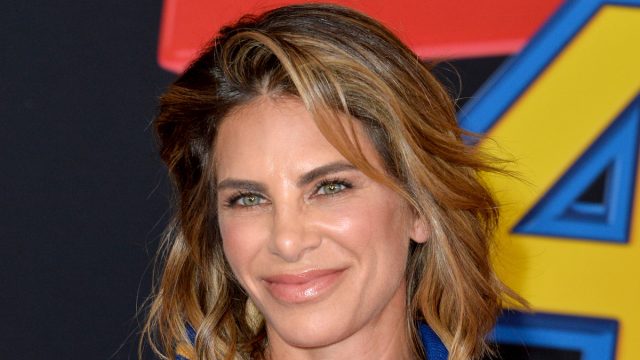Jillian Michaels in Workout Gear Shares Full-Body Workout

Jillian Michaels is ready for her fittest year yet, and wants to empower others to do the same. Michaels, 49, posted a video of herself working out in a two-piece exercise outfit, sharing a quick full-body workout and encouraging followers to be healthy in 2024. “Alright team, it’s time to get a jump start on your New Year’s goals! Grab a couple of towels, that’s all you need. 5 rounds. 1 minute of each move in swift succession. Start now and get some momentum going!” she captioned the post. Michaels is passionate about what she does and doesn’t believe in when it comes to fitness—here’s what her workouts look like.
Mixing Up Her Workouts
Michaels doesn’t believe there is one “best” workout. “The bottom line is, you really kind of need all [different types of workouts] and you want to try to incorporate [them] all,” she tells Us Weekly. “The most important thing [is] it doesn’t have to be perfect. When it comes to different types of training, whether it’s strength training, cardiovascular conditioning, HIIT training, they’re all important. It’s kind of like saying, ‘What’s more important, Vitamin C or Vitamin D?’ So, you don’t need to be overwhelmed.”
The Importance of Rest
Michaels is a huge proponent of resting in between workouts. “The reality is that when we’re sore after a workout, what’s going on is we have these micro-tears in the muscle, and that’s a good thing,” she tells Us Weekly. “When you’re sore, you really want to drink a lot of water. … Being hydrated, getting your sleep for recovery, and doing some light cardio activity is going to heal you more quickly. Don’t go train that same muscle again, because then those little micro-tears can become a little bit bigger, and then you get into over-training. Recovery is really important, and that comes with rest.”
Intermittent Fasting

Michaels is a fan of intermittent fasting. “Over a 24-hour period, you want a minimum of a 12-hour fast overnight (that’s why it’s called a breakfast!),” she tells Women’s Health. “So let’s say there are 12 hours a day when you’re fasting, and 12 hours a day when you’re eating. Break that down and you’ll need to eat about every three to four hours. That’s just enough time for breakfast, lunch, ONE snack, and dinner. I usually eat about 1,800 calories every day, with 3.5 hours between each meal. I have about 400 calories for breakfast, 500 for lunch, 200 for a snack (some of my favorite snack ideas are available on my app), and 700 for dinner. I’m perfectly fine on that schedule.”
No Grazing All Day
Michaels doesn’t believe there are any benefits to grazing throughout the day. “There’s simply no science to support grazing,” she tells Women’s Health. “There’s no benefit to keeping your insulin levels surging and making your body process food without a break. If you eat intelligently—which means eating all three macronutrients and a mix of whole grains, fruits, veggies, healthy fats, and clean protein—you should be fine eating every three to four hours and fasting overnight. If you’re not, you probably need to take a look at how you can better balance your macronutrients and calories in each meal.”
Eat Before Your Workout
Michaels believes in a small snack to boost workouts. “Depending on your fitness goals, the reality is that you should probably eat a little something before you go to the gym,” she tells Us Weekly. “Based on everything I’ve read, and everything I’ve experienced doing this since I was 17 years old, [fasted workouts] are less effective. … When you have blood sugar available, it gives you more power.”




